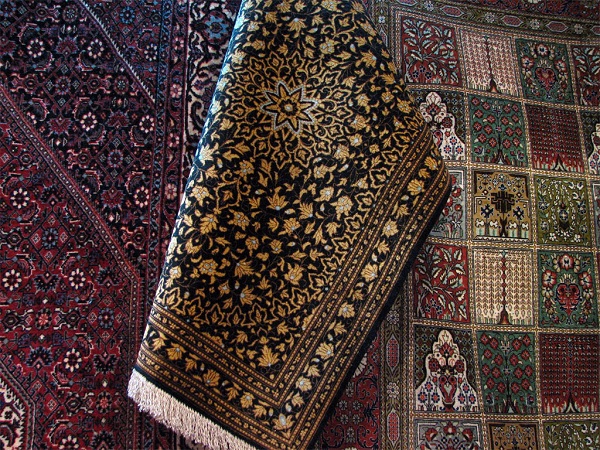By Mayank Chhaya
Chicago:(IANS) Even though the US is making clear that the trade embargo on Iran would stay for some more time, senior administration officials in Washington are making sure to let it be known that necessary “adjustment” will be made in the sanctions to allow the import of world-famous Persian carpets at the implementation date.
In a background briefing administration officials have been quoted as saying, “We are not removing our trade embargo on Iran. US persons and banks will still be generally prohibited from all dealings with Iranian companies, including investing in Iran, facilitating cleared country trade with Iran. The only adjustment we will make to those sanctions at the implementation date will be to allow the import of food and carpets from Iran and the export of civilian aircraft and parts to Iran, which has one of the worst airline safety records in the world.”
Carpet weaving has been at the heart of Persia’s culture for at least 2,500 years, if not longer. According to Iran’s National Carpet Centre, the oldest hand-woven carpet found so far is the Pazyryk Carpet. “The carpet was discovered by Russian archaeologists in their 1949 excavation of the tomb of a Scythian king in Altay mountains. The carpet, roughly sized 189×189 cm, using carbon-dating methods, is dated back as far as 500-400 BC and now is being kept at the Hermitage Museum in St. Petersburg, Russia. The experts believe it was made during the Achaemenian or Parthian rule in Persia, as most motifs and designs of the carpet resembles those popular during the time of these two dynasties,” it says.
Perhaps it is as much a tribute to the cultural significance of the hand-woven Persian rug as its importance to Iran’s economy that the sanctions against carpet imports into the US are being lifted. America has traditionally been an important market for Persian carpets. In a country of some 80 million people about two million people are said to make a living in the carpet industry hand-weaving some five million square meters every year. It is not just the number of people employed in the industry, although it is crucial as well, it is also its deep cultural roots which are also important.
According to figures widely quoted in reports about the Iranian carpet industry, during Iran’s calendar year 2012-13, the country exported carpets $427 million compared to the export worth $560 million the year before. The drop was attributed to the global sanctions against it because of its nuclear programme. In the first quarter of Iran’s national year in 2014 it was said to have exported carpets worth $57 million. The US was reported to have accounted for a meager $51,000 of that.
Perhaps it is from the standpoint of its cultural importance that the US negotiators would also have agreed to lift the sanctions against carpet import once the conditions of the deal begin to get implemented as promised. At the back of the negotiators’ mind there ought to have been the awareness of how integral the carpet is to life in Iran. Carpet weaving was said to have been introduced by Cyrus the Great in 529 BC and has undergone major evolution over the past two and a half thousand years. Although machine-made carpets have in recent years begun to replace the hand-woven ones, internationally the latter still remain much coveted.
There is realization that easing sanctions on the Iranian carpet import into the US is not going to significantly improve the Iranian economy decimated by the economic sanctions but at least the move has the merit of convincing the Iranian people about Washington’s long-term intentions. Of course, none of this can be taken to mean any degree of normalization of relations between the two countries in the foreseeable future but there are those in the Obama administration who may have considered the deep cultural symbolism that the Persian rug has enjoyed.






0 Comments